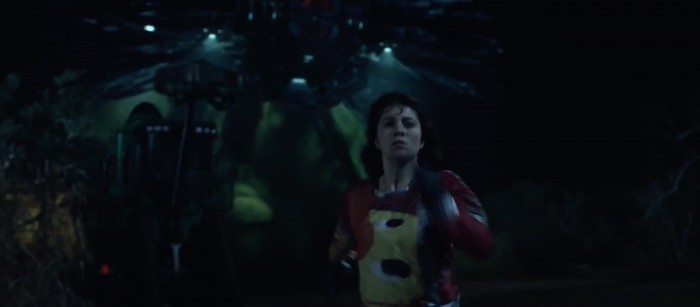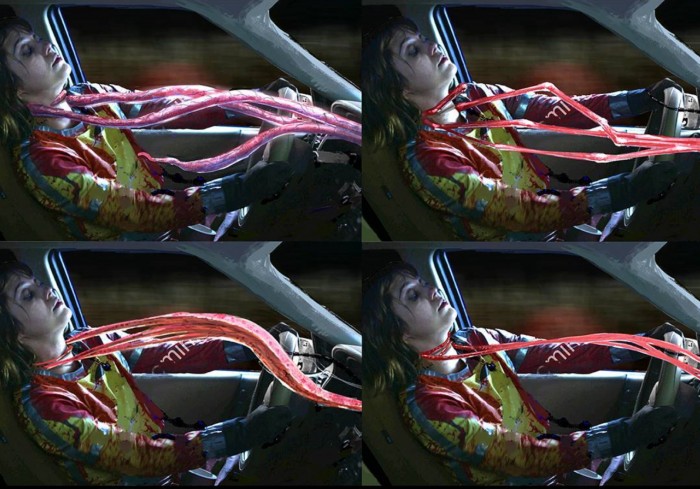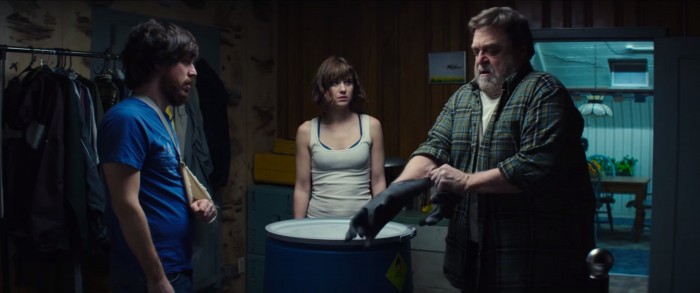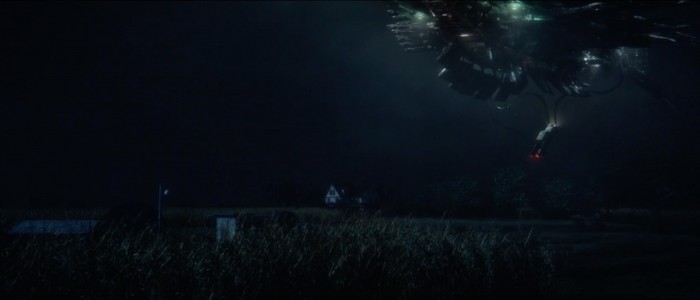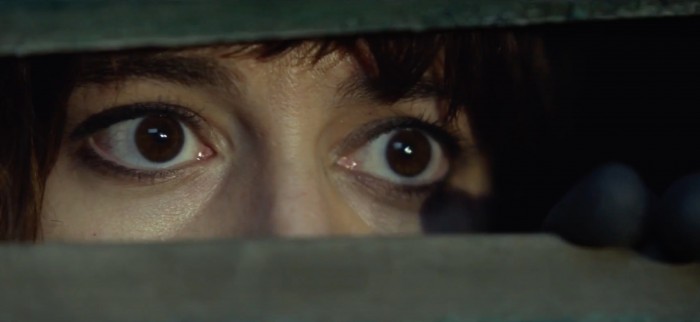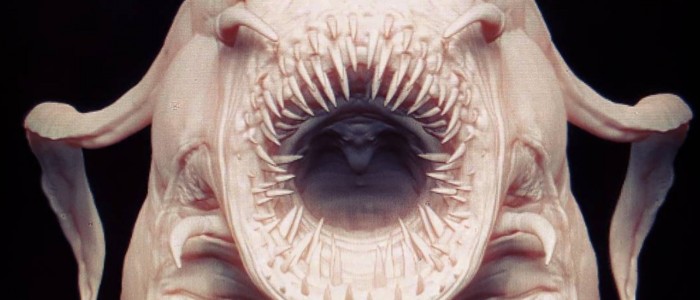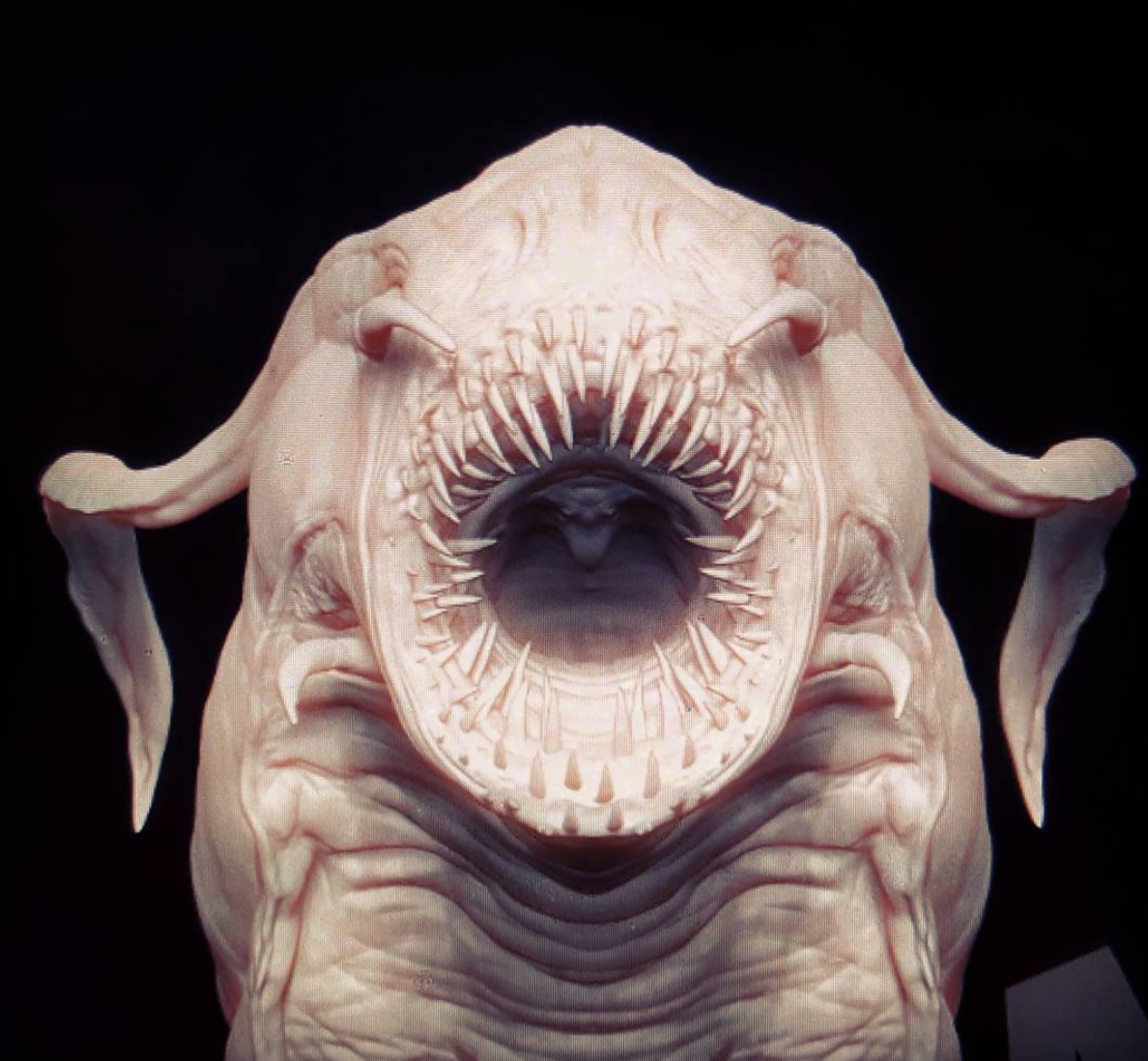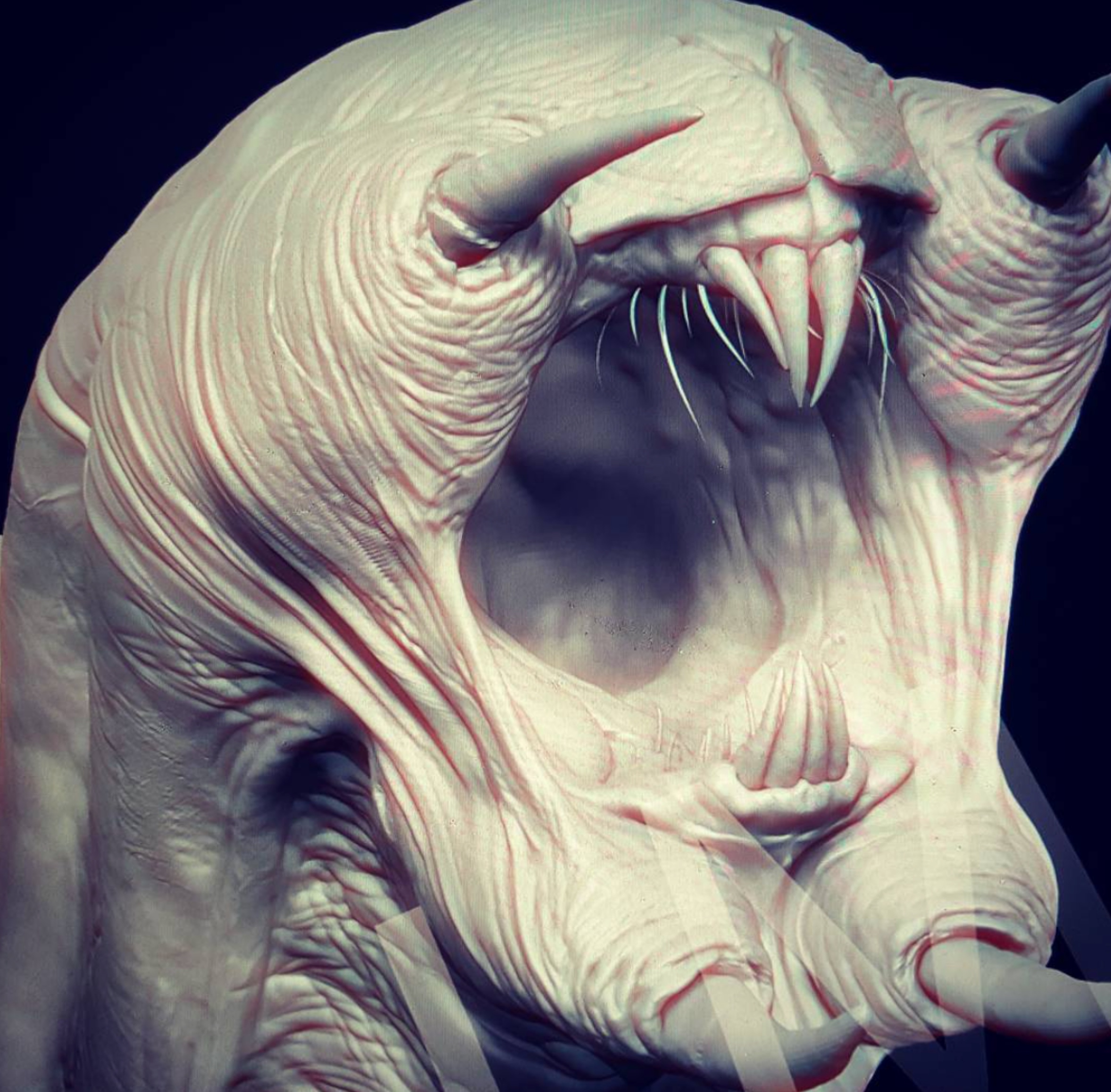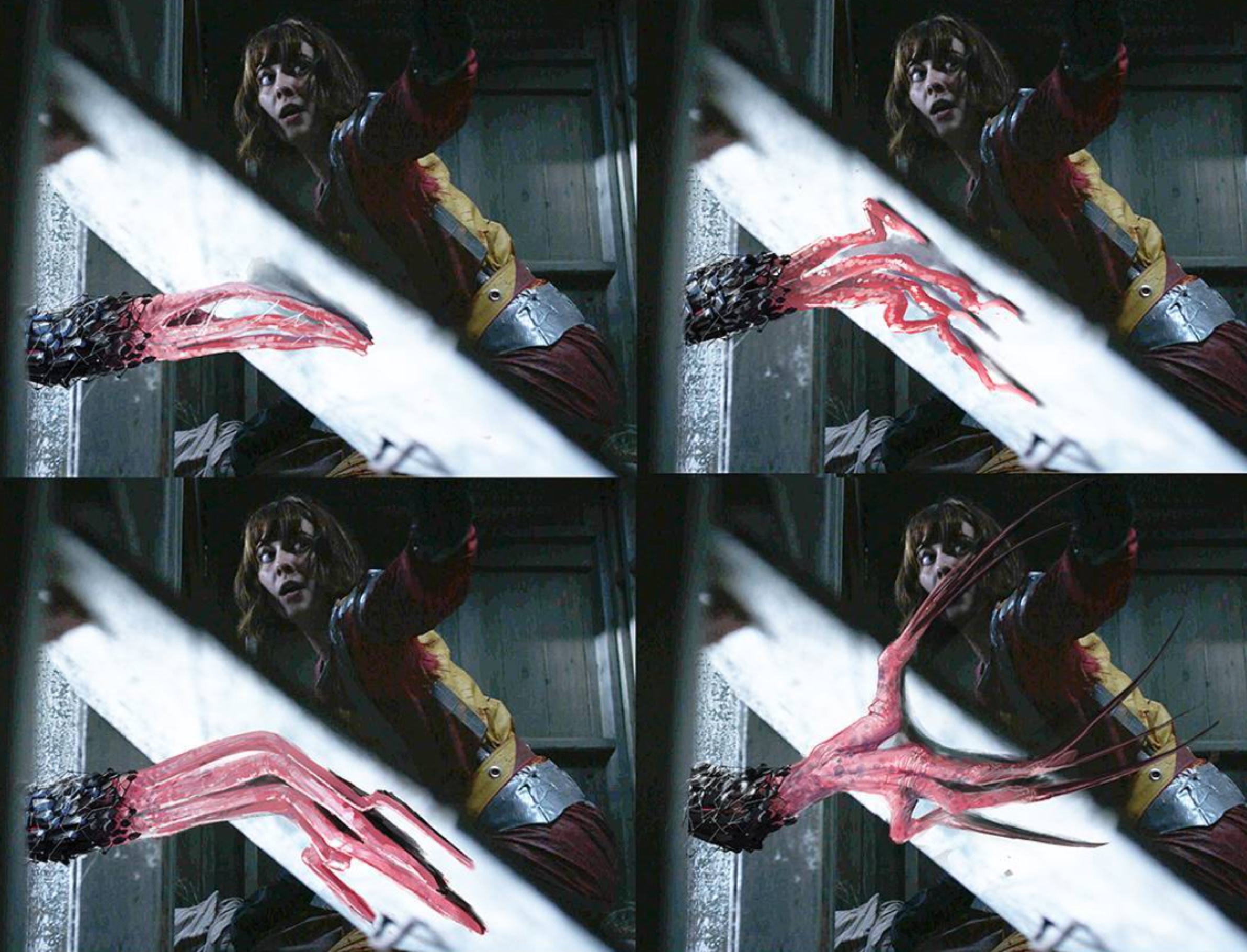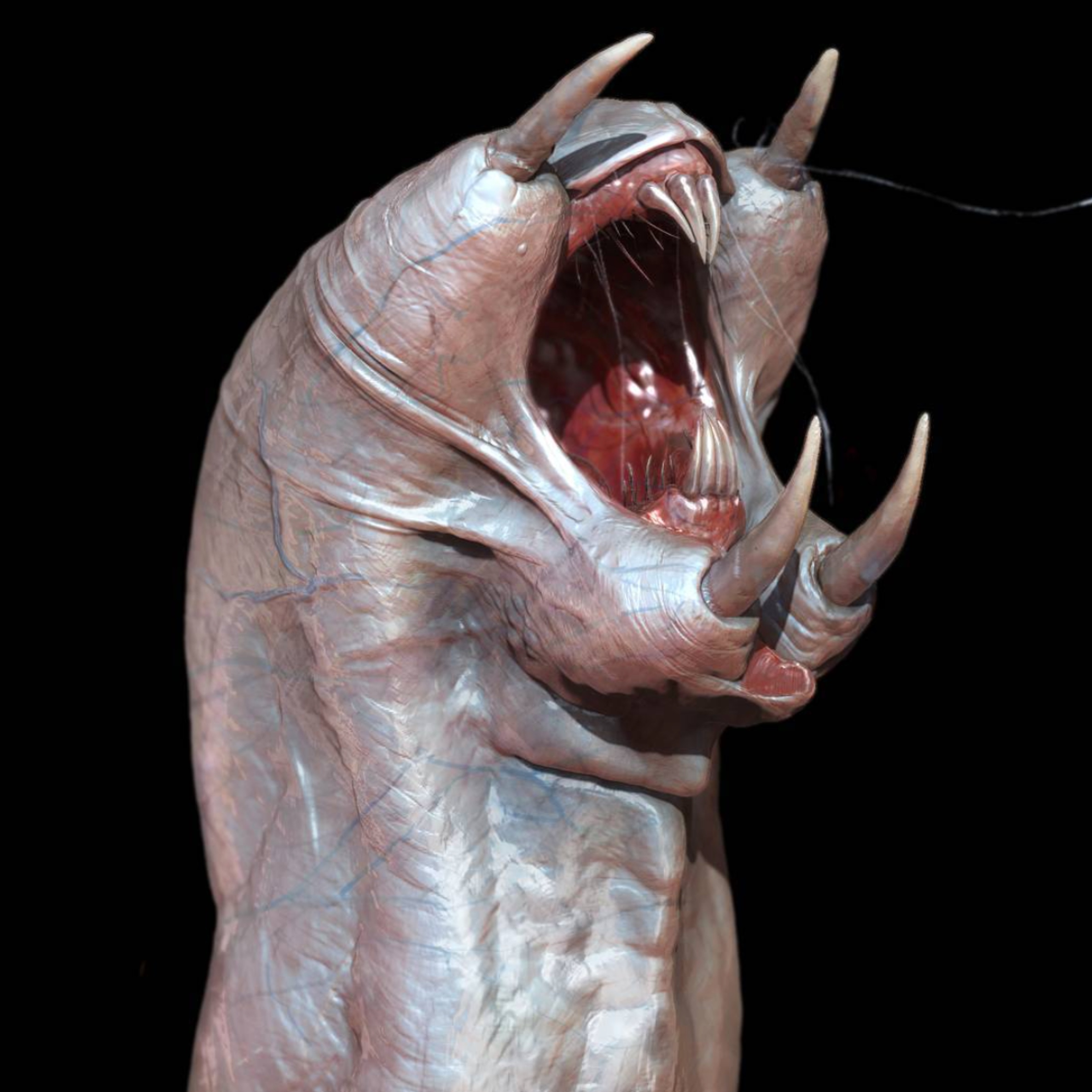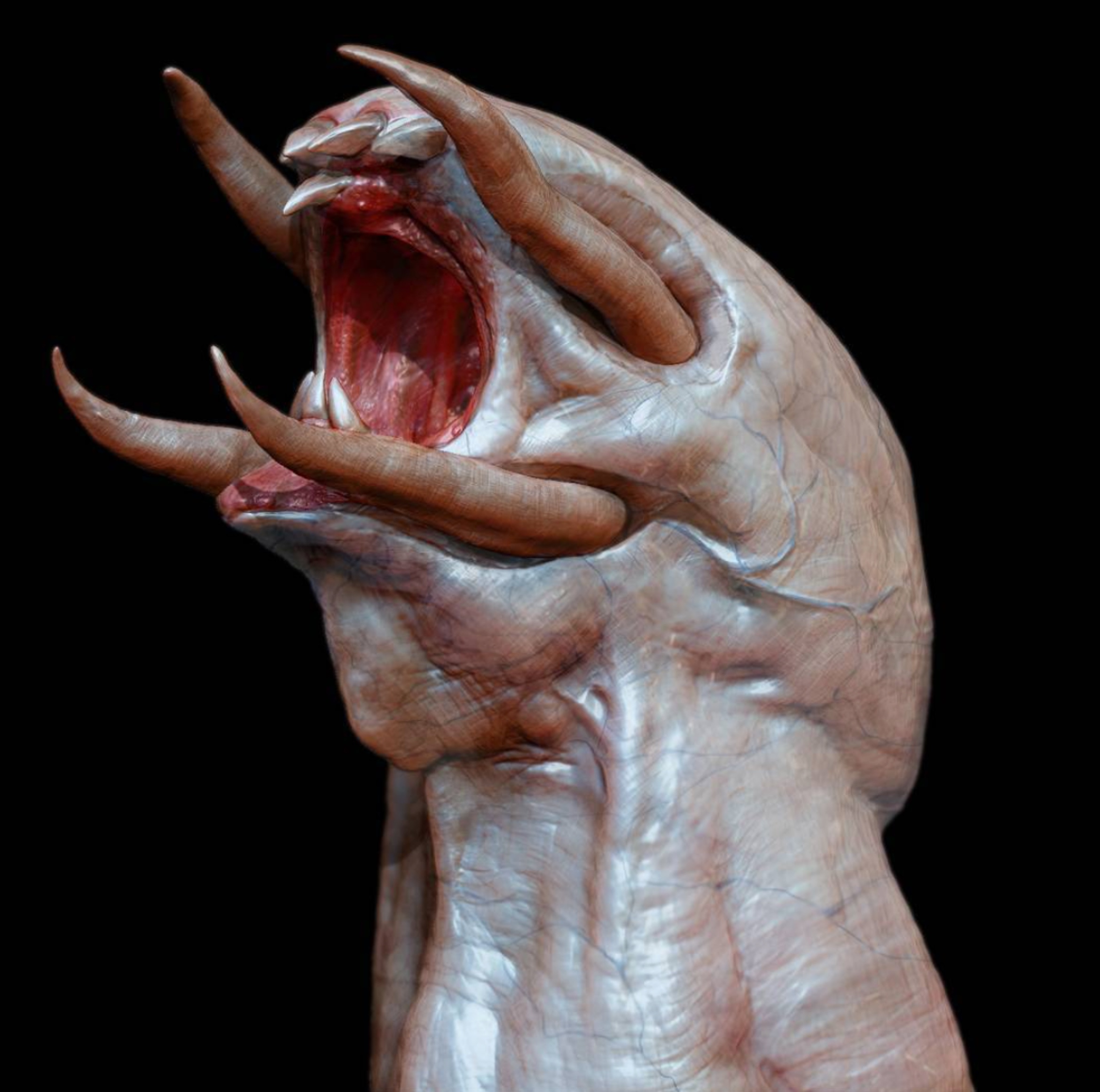'10 Cloverfield Lane' Ending Explained, See Unused Concept Art
Okay, now that 10 Cloverfield Lane has been out for a few weeks, the filmmakers have begun taking about spoilers. Want to hear about the thought and planning behind the ending of 10 Cloverfield Lane? We have some cool concept art to show you, some comments from director Dan Trachtenberg on not only the film's ending, but deleted scenes and an IMAX-style aspect ratio expansion that was planned but abandoned during post production. So if you've seen the movie, hit the jump to learn the secrets behind the 10 Cloverfield Lane ending. Insert super obvious spoiler warning here.
Why The 10 Cloverfield Lane Ending Works
Before we get to the filmmakers comments, I wanted to point out a great article by Tasha Robinson over at The Verge which has a great interpretation of the film. I know a few people, including some writers/podcasters at /Film, were bothered by the genre jump at the end of the film.
10 Cloverfield Lane is fundamentally about domestic abuse. Howard is a classic abuser, to such a degree that his actions run down a straight checklist of common tactics and warning signs. From his first moments with Michelle, he's more interested in controlling her than comforting her. He has no empathy for her, or understanding of what's going on in her head. He threatens her with violence when she disobeys his arbitrary rules, then seems baffled a moment later about why she's upset. He's jealous and volatile. He terrifies her, then blames her for hurting his feelings by not showing him enough gratitude and respect. He isolates her from her friends and family, both physically, by locking her into the bunker, and emotionally, by repeatedly claiming they're all dead and there's no way to even attempt to contact them. ...
When Michelle escapes the bunker and finds a new threat waiting, this is partially an extension of the abuse metaphor. For victims of domestic abuse, just getting out of the house doesn't immediately solve all their problems. For the metaphor to stay sound, 10 Cloverfield Lane needs to acknowledge that finding the courage to leave an abuser doesn't guarantee a happily-ever-after. For a moment, when Michelle first removes her makeshift gas mask and learns that Howard was wrong about the poisonous air, it seems like the movie might end on a note of relief, and the promise that her problems are over. But that would be facile, and would also mean that Michelle had been in a standard slasher movie, where arbitrarily bad things happen to random people, and nothing much is learned. And that wouldn't be in keeping with the movie's actual arc, which is all about the way Michelle comes to terms with her abuse. Michelle's problems didn't start with Howard, and they don't end with him. They aren't imaginary, like the toxic threat, and they aren't just part of some vague general calamity. They're specific and personal, and they require a specific, personal catharsis. And that's the primary reason the big, direct confrontation is necessary in the final act.
I love that interpretation of the film's ending, and if you dig it please check out the rest of Tasha's article on The Verge. When Trachtenberg was asked by Hitfix about the genre-changing ending, he explained it as follows:
It was to do have something that wasn't just a little tag at the end. 'Oh and this is what the world is.' No, now you have to deal with that. That was always the really exciting thing.
International Trailers Spoil Almost Everything
And speaking of spoilers, I love how the marketing campaign in the United States didn't give away too many of the twists and turns of the movie. Unfortunately, international audiences are getting a different marketing campaign as 10 Cloverfield Lane hits their markets. Watch the trailer embedded above to see how much of the ending of 10 Cloverfield Lane is spoiled in the international trailers.
Deleted Scenes
On The Q&A Podcast with Jeff Goldsmith (found via Playlist), Trachtenberg talked about the film's deleted scenes:
There's really only one in the body of the movie, where in the montage of them gathering supplies, there was one bit where they're getting stuff in the hallway, and the shelving unit tips over. It was setting up that she could toss that shelving unit on Howard in the end...it was not necessary. And in the end of the movie, the biggie is — which hopefully we can finish for the Blu-ray or something — after she drives off, she smashes into the creature, and the creature is on the hood of the car, and bursts through her dash, and sends its teeth tentacles [into the car] strangling her, and then she turns and kills it by driving it into the fire of the downed spaceship.
You can see a concept image of this climactic scene created by artist Raul Dominguez. But that extra confrontation hit the cutting room floor after they test screened the film:
We did one test screening for the movie, and they felt like, the audience was exhausted [and] it was too cheesy, and a very horror movie thing to do. It was just too much, and we had been through enough, and it was fine. It allowed us to save on effects, and finish all the shots that we really needed to finish.
I'd love to see this final confrontation finished for the Blu-ray, lets hope it happens.
Hit the next page to find out about the unused shot that almost earned the film an R-rating and an IMAX-style aspect ratio expansion that was planned but abandoned in post production; learn how Mary Elizabeth Winstead's performance in the ending scenes was partially driven by a real-life fever; and finally, see some early unused concept art of 10 Cloverfield Lane's alien creatures.
The Unused Shot That Earned The Film An R Rating
Another alternate scene almost got the film an R rating. Dan explained on the Cloverfeels podcast that they shot a different version of the scene where Howard shoots the gun and we saw the brutal and bloody repercussion to Emmet's head.
Actually, we did shoot a version that I never wanted to use by my AD really had bloodlust and was like "we gotta do it while we're here." We saw Emmet getting shot in the head and it was horrifying. We put it in the movie at one point and got an R rating.
Trachtenberg says that the shot will not be on the Blu-ray or in a director's cut because "that was never what I wanted for the movie." Sounds like it was unnecessary.
The Ending Almost Had An IMAX-Style Aspect Ration Expansion
Also on the Cloverfeels podcast, Trachtenberg explained that he had originally planned to have the final segment of the film expand into a larger aspect ratio, imitating the effect that we see in some IMAX movies.
We shot the movie on the RED Dragon. We shot the whole movie anamorphic, 2.40, but the end of the movie we shot spherically, because at the time the ultimate dream was what if this expanded into IMAX. "oh that will never happen." But I thought, wouldn't it be cool if we could recreate that experience [in a normal movie theater]. We shot spherically near the end, 1.85 aspect ratio, which is slightly less wide, so that [the movie] would be letterboxes throughout but the aspect ratio would shift up in that wide shot, and everything else would be filling the frame.
How cool would that have been? Trachtenberg explains that ultimately they didn't have the budget or time to complete the needed shots for an expanded aspect ratio and the really cool idea was abandoned. Too bad they can't finish those effects shots for the Blu-ray release as I think the effect would still work on a widescreen television.
Winstead's Performance Was Driven Partially By a Real Life Fever
Mary Elizabeth Winstead was not shown concept art of the aliens when they shot the final scenes of the film. Trachtenberg felt it would be "silly" because "it doesn't matter if it has a third eye or a tail or whatever," since "she's not going to be thinking about a giant three-eyed thing chasing her because you can't relate to that, you can't draw on that." It was also revealed that Winstead filmed that final scene while she had a 102-degree fever, which may have even helped the misery in her performance. Trachtenberg was also sick during the shoot, and completely lost his voice.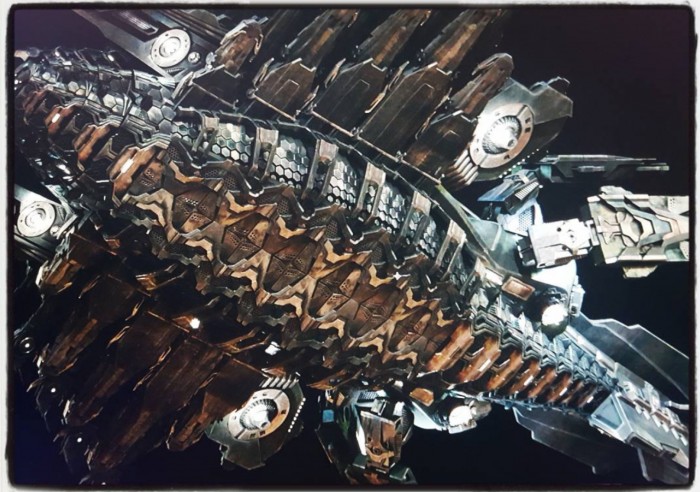
The Design of the Alien Creatures and Spaceships
Trachtenberg also told Hitfix that he "always wanted this icky, gross, worm-like thing" for the creatures themselves, inspired by Tremors which "really affected" him as a child. On the Cloverfeels podcast, Trachtenberg explained that the design of the alien spacecraft "really evolved over time," a combination of Abrams and his ideas.
I was big on making a ship that felt organic. I love the idea of the ship being a creature also. For both the creature and the ship, J.J. was very fixated on it feeling armored and mechanical. So the creature was a hybrid of both of our ideas, on one hand being very icky, that worm but also being armored. And the ship kind of resembled a little version of that. And the tentacles, I always loved looking at that deep sea Marianas Trench stuff because thats real life things that look horrifying. I liked the idea of making an alien species that felt like something out of our own deep sea, and thats where the look of that came from.
I'd love to see what the other designs for the 10 Cloverfield Lane creatures looked like, and thanks to the internet we have a look at a couple of the alternate choices.
10 Cloverfield Lane Concept Art
Concept designer Raul Dominguez has posted a bunch of images or early alien creature that he created for the film:

